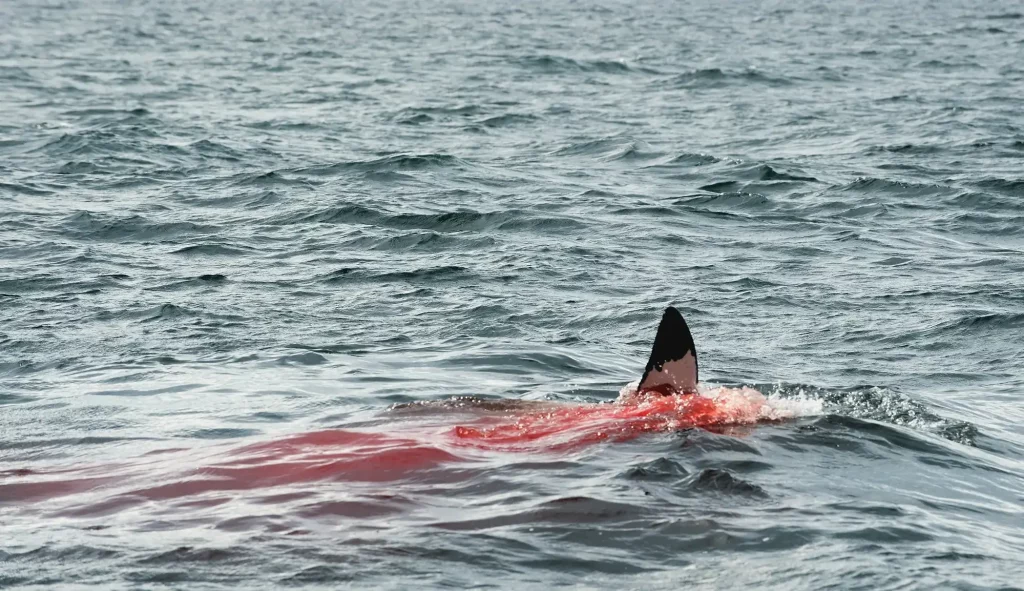Global Overview of Shark Attacks in 2023
Millions of people swim in the ocean annually despite the looming threat of shark attacks.
Out of these millions, however, only 91 individuals experienced a shark bite last year, of which 14 were fatal, and 10 were unprovoked incidents.
Unprovoked attacks don’t involve human intervention, while provoked ones do.
This leads to the crucial point, that entering shark territory and potentially competing with them for food is a recipe for shark attacks.
Understanding these dynamics is key to coexisting safely with these misunderstood creatures.

Why does the ISAF monitor shark attacks on a global basis?
This record-keeping serves several crucial purposes:
Scientific Research: Shark attacks can indicate shark habitats and migration patterns, which help paint a picture of overall ecosystem health.
Public Safety: Knowing when and where shark attacks occur helps public officials develop and enhance safety protocols to reduce the chances of human-shark interaction.
Conservation Efforts: Shark attack patterns can show how human activities affect shark populations. Knowing this allows for better development of conservation strategies to prevent biodiversity loss.
Educational Outreach: People need to become aware of shark attacks (or the scarcity of them) so that they can separate fact from fiction and get a better idea of how sharks truly behave.
Shark Attack Trends
Shark fatalities are decreasing from a historical perspective thanks to quicker response and treatment. Earlier shark spottings and newer technologies have also allowed people to take steps to avoid encounters.
Activities Linked to Shark Bites

Most shark bites are linked to surfing and boarding sports, as seen in this table:
| Victim Activity at Time of Encounter | Percentage of Shark Bites |
|---|---|
| Surfing/Boarding Sports | 42% |
| Swimming/Wading* | 39% |
| Snorkeling/Free Diving | 13% |
| Other | 6% |
* Sea wading here refers to walking in the ocean, partially immersed.
The International Shark Attack File
The International Shark Attack File (ISAF) documents all global shark attacks and provides this data to government agencies, coastal managers, and other professionals to help better implement management and policies.
While the majority of attacks happen on surfers and bodyboarders, they are also likely to spend more time in the water and to surf alone, not in pairs. Scuba divers on the other hand always dive with a buddy. So it helps to put things into perspective.
Regional Focus – Notable Shark Attacks of 2023

While shark attacks, especially fatal ones, are exceptionally rare, some examples showcase just how dangerous encountering a shark can be.
Red Sea Shark Attack of 2023
One notable shark attack occurred in Egypt in June 2023. In this case, a man was attacked repeatedly by a tiger shark before being dragged underwater. The fact that the shark took multiple passes at the man indicates an act of predation, which is almost unheard of around the world.
2023 Bahamas Shark Attack
Another notable shark attack is one that happened in the Bahamas, when a woman was attacked by a shark while paddleboarding. After the lifeguard brought her back onshore, she was pronounced dead at the scene.
Note that these attacks are rarely the result of a shark intentionally eating a human; it’s typically a result of blood loss, which can result from a bite to an artery.
Attacks Elsewhere Around the World
Of the 69 unprovoked shark bites in 2023, 51 occurred in the US and Australia. Australia had 15 unprovoked attacks, 4 of which resulted in fatalities.
In the US, 16 non-fatal attacks occurred in Florida. And while California only had 2 attacks, 1 was fatal.
Most attacks occur near surfing and board spots. This makes sense, as the more people are in the water, the more likely sharks will mistake them for prey.
What’s more, Australia, California, and Florida all feature fair weather and year-round warm waters, which attract people to the beaches and oceans throughout the year. This constant presence of beachgoers helps explain the higher number of shark encounters in these regions.
Understanding the Risks
Shark attacks are exceptionally rare, with the chances of a person being attacked by a shark in the US being 1 in 11.5 million. A person is more likely to die from things like fireworks, lightning, and train crashes.
These numbers demonstrate just how unlikely a person is to be attacked or killed by a shark as long as proper precautions are taken.
There were 10 unprovoked fatal shark attacks worldwide in 2023, compared to 5 in 2022. This number, though doubled the previous year, has been higher in the past and fluctuates annually.
The Impact on Humans and Sharks
Stories told by shark attack victims often contribute to negative perceptions of the animals. One is that of Rodney Fox, who was attacked by a shark that left him severely injured on his chest, abdomen, right arm, and right hand.
Another miraculous survival story is that of Henri Bource, who lost his leg during a shark attack, a part of which was filmed.
Shark attacks can have profound impacts on local communities, often leading to significant changes in policy and public perception.
For instance, following a fatal shark attack on a teenager, authorities in La Réunion Island responded by closing the beach to prevent further incidents. This measure reflects a common approach to ensure immediate public safety, but it also affects local tourism and recreational habits, sometimes causing economic strain.
In Australia, the government has taken a different approach by legalizing shark culling as a measure to protect beachgoers. While aimed at ensuring safety, such practices are controversial and spark debate among conservationists, who argue that they harm marine ecosystems and disrupt the balance of marine life.
Both examples illustrate the complex interplay between human safety, economic interests, and environmental conservation that communities must navigate in the aftermath of shark attacks.
Shark Attacks Over Time
The number of shark attacks has increased over time, along with the human population. Thus when looking at the ratios between shark attacks and the population, there hasn’t been much change in the last few decades.
Factors affecting shark attack rates include ocean warming, which may drive more sharks to northern, more heavily populated, areas, and increasing global temperature, which may also drive more people to the beaches.
Overfishing and poor fishing practices may be causing sharks to travel closer to shores to find enough food.
FAQ Corner
How many shark attacks per year and how do 2023 figures fit into the larger pattern?
There was an average of 63 unprovoked shark attacks from 2018 to 2022, meaning the 69 attacks in 2023 are slightly higher than average.
How often do fatal shark attacks occur, and what does this mean for oceangoers?
The chances of being in a fatal shark attack are 1 in 4.3 million. Oceangoers shouldn’t be worried about entering the water assuming they’re following precautions and guidelines.
Are shark attacks in popular destinations like Florida becoming more frequent?
Shark attacks are becoming more frequent.
Shark Sightings and Safety
The public, government agencies, or lifeguard patrols usually do shark sightings. Sightings are processed to alert local response agencies or the wider public via social media. These proactive steps allow for increased safety around beaches.
When it comes to ocean activities, it’s important to remember to respect the boundaries of the animals. Once you take the proper precautions, you should have no trouble enjoying your time among the waves.




